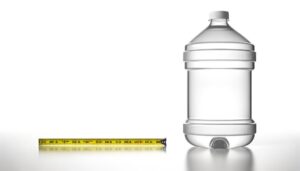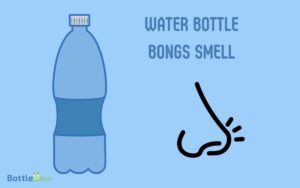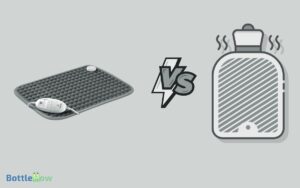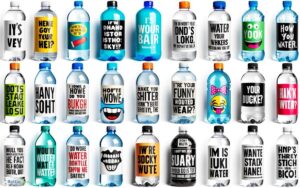Can You Put a Camelbak Water Bottle in the Dishwasher? Yes!
Yes, you can put most CamelBak water bottles on the top rack of the dishwasher. Make sure to disassemble all parts first. Models like the Eddy+, Chute Mag, and Podium series are designed to be dishwasher-safe.
Be cautious, though—dishwasher use can cause lid and valve wear and tear. High temperatures and detergents might degrade plastic and rubber components over time.
Always consult the user manual for specific guidelines. For those looking to extend the life of their bottle and avoid potential damage, there are other cleaning methods worth considering.
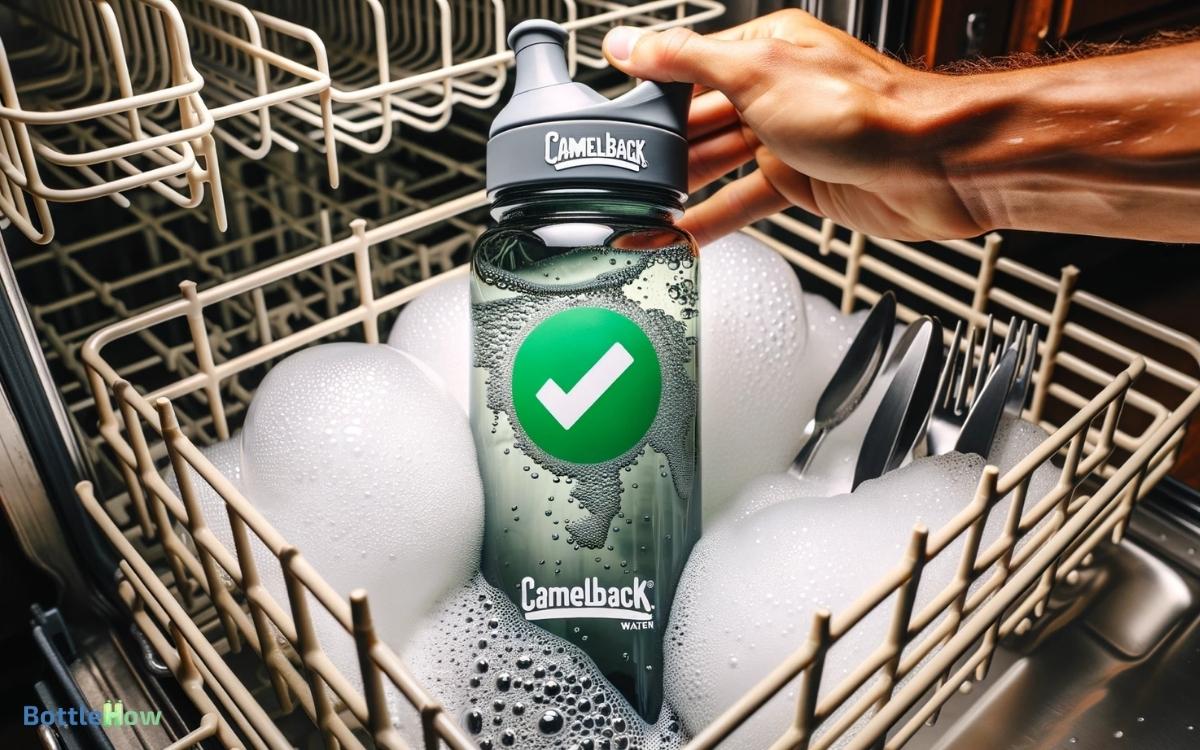
Key Takeaways
Manufacturer Guidelines
According to CamelBak’s official guidelines, most of their water bottles are top-rack dishwasher safe. To guarantee proper cleaning, place the bottle, cap, and any detachable parts on the top rack.
This prevents exposure to intense heat at the bottom, which could damage the bottle’s materials.
Before placing parts in the dishwasher, disassemble them completely. This allows water and detergent to reach all surfaces, ensuring thorough cleaning. Avoid using bleach or chlorine, as these chemicals can degrade the materials.
Always check the user manual for specific instructions related to your CamelBak model. Following these guidelines helps maintain the longevity and performance of your water bottle, so you can enjoy clean hydration without compromising the product’s integrity.
Dishwasher-Safe Models
CamelBak offers a variety of dishwasher-safe models, including the Eddy+, Chute Mag, and Podium series, each designed to withstand the top-rack placement for best cleaning. These models use high-quality materials that endure the dishwasher’s heat without degrading.
To guarantee peak performance and longevity, always adhere to the following:
- Place all parts on the top rack to prevent exposure to heating elements.
- Remove the cap and straw, separating all components.
- Use a mild detergent to avoid chemical damage.
- Regularly check for wear and tear, replacing parts as needed.
Risks of Dishwashing
When you put a Camelbak water bottle in the dishwasher, you risk potential material damage due to high temperatures and aggressive detergents.
The lid and valve components may also suffer from wear and tear, compromising their functionality and seal integrity. Always consult the manufacturer’s guidelines to guarantee your bottle’s longevity.
Potential Material Damage
Dishwashing your CamelBak water bottle can lead to potential material damage, particularly to the bottle’s plastic and rubber components.
High temperatures and harsh detergents can degrade these materials, compromising their durability and safety.
Over time, frequent dishwashing may cause the plastics to warp or crack, and the rubber parts to lose elasticity or become brittle.
To maintain the integrity of your CamelBak, consider these risks:
- Plastic Degradation: Repeated exposure to heat can cause the plastic to weaken and break down.
- Rubber Damage: The rubber seals and gaskets may lose their flexibility and effectiveness.
- Color Fading: Intense heat and chemicals can lead to discoloration and fading of the bottle.
- Structural Weakening: Overall integrity of the bottle may diminish, leading to leaks or breakage.
Lid and Valve Issues
In addition to potential material damage, improper dishwashing can also lead to issues with the lid and valve of your CamelBak water bottle.
The high heat and strong detergents in dishwashers can degrade the silicone seals and gaskets, compromising their effectiveness. This can result in leaks and reduced functionality of the bite valve.
Moreover, small parts like the valve components can shift or become dislodged during the wash cycle, causing them to break or go missing.
To make certain your CamelBak’s performance isn’t compromised, it’s best to hand wash the lid and valve components with mild soap and warm water. This careful attention helps maintain the integrity and longevity of your water bottle.
Hand-Washing Tips
To hand-wash your Camelbak water bottle, start by disassembling all removable parts to guarantee a thorough clean. This includes the lid, straw, bite valve, and any other detachable components.
Use warm, soapy water and a soft brush to gently scrub each piece. Rinse thoroughly to remove all soap residue.
Here are the steps:
- Disassemble: Remove the lid, straw, bite valve, and any other parts.
- Scrub: Use warm, soapy water and a soft brush to clean each piece.
- Rinse: Make sure all soap is thoroughly rinsed off.
- Dry: Air-dry all parts completely before reassembly to prevent mold growth.
Cleaning Accessories
To guarantee your Camelbak water bottle stays clean, use a bottle brush specifically designed for narrow openings.
After washing, let the bottle air-dry completely to prevent mold growth. Stick to mild, non-abrasive cleaning agents that won’t damage the bottle’s material.
Proper Brush Selection
Selecting the appropriate brush for your Camelbak water bottle guarantees thorough and efficient cleaning without damaging the materials. Opt for brushes with soft bristles to avoid scratching the interior surfaces.
Additionally, make sure the brush head is flexible enough to reach all corners and crevices. A long handle will provide better access, especially for deeper bottles.
Consider the following essential features:
- Soft Bristles: Prevents scratches on plastic or stainless steel.
- Flexible Head: Reaches awkward spots and tight corners.
- Long Handle: Ensures you can clean deeper bottles thoroughly.
- Durable Material: Withstands repeated use without wearing out.
Drying Techniques
Effectively drying your Camelbak water bottle and its accessories guarantees they stay hygienic and ready for your next adventure. Start by disassembling all parts, including the cap, straw, and bite valve.
Use a clean, dry towel to remove excess water. Then, place the bottle and its components on a drying rack. Make sure they’re positioned to allow maximum airflow, which speeds up drying.
For the bite valve and straw, consider using a pipe cleaner or bottle brush to make certain no moisture remains inside. Avoid reassembling the parts until they’re completely dry to prevent mold and bacteria growth.
If you’re in a hurry, a hairdryer on a cool setting can expedite the process without causing any damage.
Safe Cleaning Agents
When cleaning your Camelbak water bottle, it is important to choose safe cleaning agents.
Options like mild dish soap, baking soda, and specialized bottle cleaning tablets are recommended for maintaining the longevity of your bottle and ensuring the safety of your drinking water.
Avoid using harsh chemicals or abrasive cleaners, as they can damage the bottle’s materials.
Using these agents helps maintain the integrity of the bottle’s materials while ensuring that no harmful residues remain, making your drinking water safe and pure. Always rinse thoroughly after cleaning to remove any cleaning agent residue.
- Mild Dish Soap: Gentle yet effective for routine cleaning.
- Baking Soda: Natural deodorizer and cleaner for stubborn odors.
- Bottle Cleaning Tablets: Designed specifically for deep cleaning hard-to-reach areas.
- White Vinegar: A natural disinfectant that can eliminate bacteria and mold.
Common Mistakes
Many people mistakenly assume all parts of a Camelbak water bottle are dishwasher-safe, leading to potential damage and compromised functionality.
One common mistake is placing the lid and bite valve in the bottom rack, where the high heat can warp them. Always put these parts on the top rack.
Additionally, some users forget to disassemble the straw and valve, resulting in trapped debris and mold growth. Make sure to separate all components before washing.
Another error is using harsh detergents or bleach, which can degrade the materials and affect the taste of your water. Stick to mild dish soap.
Extending Bottle Lifespan
To extend the lifespan of your Camelbak water bottle, regularly inspect and clean all components to prevent wear and tear.
Pay close attention to the lid, straw, and bite valve, as these areas are prone to buildup and damage.
- Inspect seals and gaskets: Look for cracks or wear that might cause leaks.
- Clean thoroughly: Use a bottle brush to clean hard-to-reach areas and make sure all parts are free from mold and residue.
- Avoid harsh chemicals: Stick to mild soap and water to prevent material degradation.
- Store properly: Keep your bottle in a cool, dry place to prevent exposure to extreme temperatures that can warp plastic parts.
User Experiences
After taking steps to extend your Camelbak water bottle’s lifespan, you’ll find that user experiences can offer valuable insights into the practicality and effectiveness of different cleaning methods. Many users have shared their thoughts on whether or not to use a dishwasher.
Here’s what they’ve found:
| Cleaning Method | Pros | Cons |
|---|---|---|
| Dishwasher | Convenient, thorough cleaning | Potential for lid damage |
| Hand Washing | Gentle on components | Time-consuming |
| Bottle Brush | Effective for deep clean | Requires extra tools |
Users often report that dishwasher use is convenient but can lead to wear on the bottle’s lid. Hand washing is gentle but more time-intensive. This tradeoff raises concerns about Tal water bottle dishwasher safety, as repeated exposure to high temperatures and detergents may degrade certain materials over time. To prolong the bottle’s longevity, some users prefer hand washing despite the added effort. Ultimately, balancing convenience with proper care helps maintain both cleanliness and durability.
Bottle brushes provide a deep clean, though they require additional tools. Understanding these experiences helps you make an informed decision.
Conclusion
So, you think you’re saving time by tossing that CamelBak water bottle in the dishwasher, huh? Well, the manufacturer might disagree.
Sure, some models are ‘dishwasher-safe,’ but frequent washes can compromise seals and shorten its lifespan. Hand-washing with the right accessories actually preserves your investment.
Funny how taking the ‘easy’ route ends up being more work in the long run. So, maybe stick to hand-washing—your CamelBak will thank you for it.


